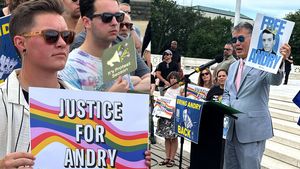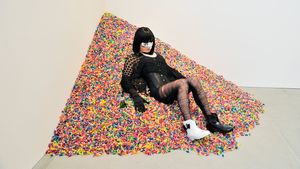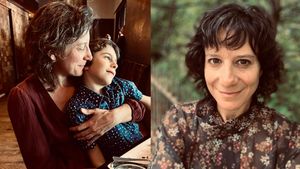(CNN) — Each year, thousands of babies die suddenly and unexpectedly, and more than 3,300 young lives were lost in 2020. Rates remained stubbornly high in the first year of the Covid-19 pandemic, even as overall infant mortality dropped to a record low.
A study published Monday in the journal Pediatrics found that the rate for Black babies spiked in particular, widening an already stark disparity.
About 1 out of every 6 infant deaths were considered sudden unexpected infant deaths, or SUIDs, a broad classification of deaths that includes sudden infant death syndrome, known as SIDS, along with accidental suffocation and strangulation in bed and other unknown causes.
While the SUID rate for White babies dropped to the lowest it has been since 2017, the rate for Black babies in 2020 was the highest it has been since then. Rates that were already about two times higher for Black babies in 2017 grew to nearly three times higher in 2020, the study found.
Sharyn Parks Brown, an epidemiologist with the US Centers for Disease Control and Prevention's Division of Reproductive Health and co-author of the study, said the research team reanalyzed the data a couple of times to be sure they were interpreting the findings correctly.
For decades, SUID rates had stayed consistent within each racial and ethnic group and were always highest among American Indian infants. But in 2020, the rate among Black infants surpassed that of American Indian infants.
"We would typically — ideally — look at five years of data in order to see any sort of trend emerging. So, these are very preliminary findings," Parks Brown said. "But this is something that we're going to have to continue monitoring."
In a commentary responding to the research, physicians said that the high rates of sudden unexpected infant deaths in the United States — and growing disparities — "reflect our societal failures."
Socioeconomic disparities "not only result in limited access to health care and education, but also in many families not having a stable, safe place for their infants to sleep," they wrote.
Untangling underlying causes
In 2020, 41 percent of all sudden unexpected infant deaths were attributed specifically to SIDS, 27 percent were identified to be accidental suffocation and strangulation in bed, and 31 percent were classified as an unknown cause.
Deaths attributed specifically to SIDS jumped between 2019 and 2020, rising from the fourth leading cause of infant mortality to the third.
But this particular trend might highlight just how much we don't know about these deaths, the new study suggests.
The lines between the three classifications within the SUID category are blurry, and the proportions have shifted over the years. Experts say there's been wide variation in how medical examiners and coroners code them, and they're less distinct than they may seem.
"The root causes of, and distinction between, SIDS and an unknown cause of death are poorly defined," said Cheryl L. Clark, associate director of epidemiology, evaluation and metrics at the Association of Maternal and Child Health Programs, who was not involved in the new study.
Individuals responsible for death certification have convened for a couple key meetings in recent years with specific intent to find consistency in the practice. And according to the new study, the unexpected increase in SIDS deaths in 2020 is most likely a result of shifting diagnostic criteria.
While the SIDS rate increased about 15 percent from 2019 to 2020, the broader SUID rate — which also includes deaths attributed to accidental suffocation and other unknown causes — increased only 3 percent in that year, an increase that's not considered statistically significant, the researchers found.
Still, the latest data emphasizes why continued focus — and better understanding — of the topic is important.
"In some ways, it was reassuring that the SUID rate didn't increase," Parks Brown said.
"But it just further emphasizes what we've been seeing over the past couple of decades: We're not successfully moving the needle on reducing these deaths."
And untangling the specific causes behind all sudden unexpected infant deaths is critical.
"The bottom line is that you can't prevent something if you don't know what causes it," she said. "It's important to figure out what's happened in each death. That includes doing a thorough autopsy and getting a really detailed death scene investigation to find out what happened to the infant."
Focus on safe sleep
Despite the attempt to better differentiate within the broader category of sudden unexpected infant deaths, experts say there's a critical underlying thread.
"Almost all SUID deaths have at least one unsafe sleep risk factor. More than 95 percent of them," said Dr. Rebecca Carlin, a pediatrician with the Columbia University Vagelos College of Physicians and Surgeons.
This could include an infant sleeping on their stomach, sleeping in a parent's bed instead of a crib, having soft bedding or pillows in the crib, or tobacco use by the parents.
These unsafe sleep practices become risk factors because they decrease how easy it is for infants to arouse when they need to, typically every couple of hours, said Carlin, who co-authored the commentary published alongside the study Monday.
"There's almost always one — and often multiple — risk factors that are really avoidable with additional societal assistance," she said.
"Being a new parent is hard. And it's hard to talk about these issues without talking about the supports that we give new parents as a society."
Going back to work six weeks or sooner after a child is born and still waking up every three hours with them isn't really feasible, she said. It's understandable why parents would turn to unsafe sleep practices in an effort to get their child to sleep longer.
"Funding to adequately assess and support changes required to address root causes of adverse health and inequitable societal conditions and systems that disproportionately impact Black and Indigenous communities is essential, focusing on community-led efforts that may increase protective factors and reduce risk," said Sabra Anckner, associate director for clinical and community collaboration at the Association of Maternal and Child Health Programs, who wasn't involved in the new study.
Many socioeconomic factors that disproportionately put Black babies and their families at risk for poor health outcomes overall were only exacerbated during the pandemic, experts say. For those families with infants, these stressors could have seeped in and affected safe sleep habits.
"Safe sleep is hard," said Judy Bannon, CEO and founder of Cribs for Kids, a national group that provides cribs for those in need and advocates for safe infant sleep practices and wasn't involved in the new research.
Experts agree that continued education and community support to reinforce safe sleep practices is key, and time spent in the hospital post-partum is a critical opportunity.
Among other programs, Cribs for Kids has a hospital certification program that has recognized hundreds of hospitals nationwide for the commitment to safe sleep practices.
It also has a public safety initiative, working with local EMS of law enforcement personnel to keep an eye out for where a baby's sleeping when they're in a house for any reason.
"It's a matter of parents hearing about it from every place that they go," Bannon said.
The-CNN-Wire
™ & © 2023 Cable News Network, Inc., a Warner Bros. Discovery Company. All rights reserved.
- Black Doctors Comprise Only 5.7 Percent of US Physicians ›
- Black Couple's Home Appraisal Went Up $500,000 After Their White Friend Posed as the Owner ›


















































